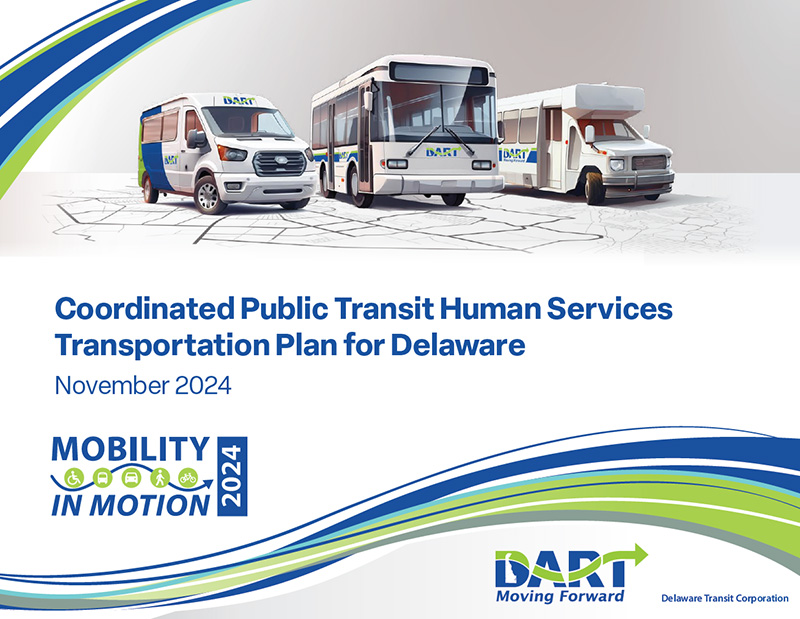
DART launched the Mobility in Motion program in 2020 to help organizations in your community provide transportation services to Delaware seniors and individuals with disabilities, when DART services are not an option. These organizations all over the state have vans and buses that can take you where you need to go.
As a part of Mobility in Motion, a Coordinated Human Service Transportation plan is required to be updated every four years. The goal of the plan is to understand where and what the needs are, and to consider how to meet those needs and improve the services provided.
DART has prepared an update to the 2020 plan, Mobility in Motion 2024, that studies transportation services for Delaware residents, particularly older adults, people with disabilities, veterans, or individuals with lower income.
The primary focus of Delaware’s Coordinated Human Services Transportation Plan Update is improving transportation options and access to services for the following target population groups:

Historically these population groups have high rates of transit dependency and low access to personal vehicles.
Public and Stakeholder Engagement
DTC conducted a survey to hear what the public had to tell us about their transportation needs. DTC also reached out to non-profit and social service organizations including transit providers, human service organizations, and local and state agencies and organizations, for their input.
The answers to the surveys and questionnaires were combined with a study of the demographics of Delaware. For example, the number of seniors in Delaware is growing, increasing the need for transportation services.
The most commonly cited need was that there is not enough transportation for those who do not drive, but there were other needs as well, such as difficulty using services, lack of awareness.

Overall Objectives
- Find additional funding sources
- Address the shortage of drivers
- Create partnerships between transportation providers
- Create an Advisory Committee to provide guidance and recommendations
- Make it easier for the elderly or disabled to use public transit
- Provide driver and staff training to promote quality customer service
- Provide public education and outreach on available services and how to use them
- Prepare the public for additional microtransit services
- Prepare for an aging population


